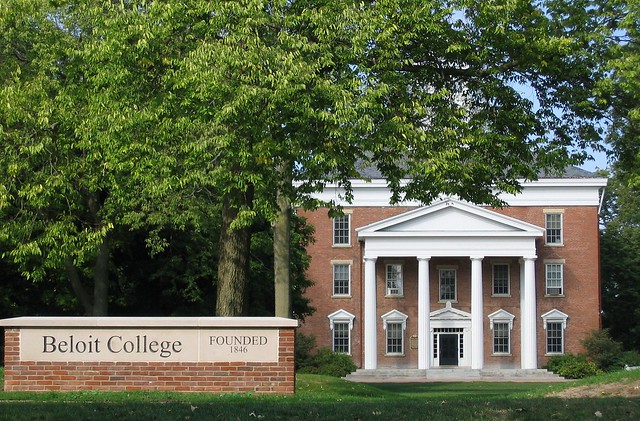The History of Beloit

The Greater Beloit area, centered at the confluence of the Rock River and Turtle Creek, was long home to various tribes of Native Americans; from the ancient Mound Builder culture to the Ho-Chunk, the last to have a permanent settlement in the future Beloit. In 1832, during the Black Hawk War, while frontier militia (including a young Abraham Lincoln) pursued Sauk warrior Black Hawk and his followers throughout southern Wisconsin, the Ho-Chunk abandoned their settlements here and fled.
Joseph Thibeau was the first white man in Beloit following the departure of the Ho-Chunk. A French fur trader, with a good reputation with the area's tribes, Thibeau settled at the southwestern corner of present day State Street and Shirland Avenue. It was he who greeted Caleb Blodgett, Beloit’s first permanent settler. Thibeau sold Blodgett “three looks of land" and that purchase marks Beloit’s beginning as a village.
With the arrival of the New England Immigrating Company in 1836, the growth of the fledgling community was assured. The settlers came from Colebrook, New Hampshire, and were led by the able scout, Dr. Horace White. They bought land from Caleb Blodgett, started developing it, and soon family and friends were moving to the area. Churches and schools were planned, mills were running using water from Turtle Creek and the Rock River. Businesses took root and the village was named "Beloit." Only eleven years later—in 1847—the cornerstone of Beloit College's first building, Middle College today, was laid.
Further Reading & Information
Click the following links to be taken to more information regarding Beloit and it's diverse history.
About Beloit
- Beloit Historical's First 100 Years- Beloit Physician History
- Court History Of Rock County, Wisconsin
- From Beloit Iron Works To Beloit Corporation
- Hall of Fame: Alphabetical
- Hall of Fame: By Year
Wars
- Canongate- Civil War Service Records
- Lincoln Conspiracy
- Underground Railroad
- World War I Service Records
People Of Beloit
- Albert Wirz: Victim Of The Titanic- Following The Sky: Celebrating Beloit Aviation
- Johnny Watts: The State's First Black Basketball Star
- Roy Chapman Andrews: A Real Indiana Jones
- Frank McKearn
